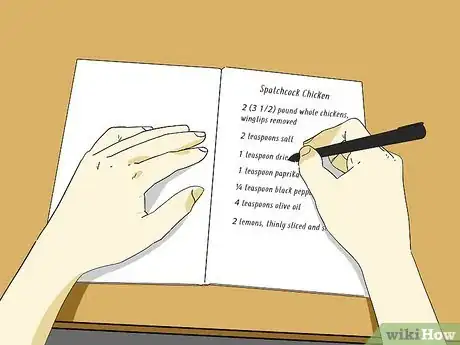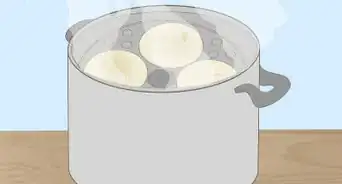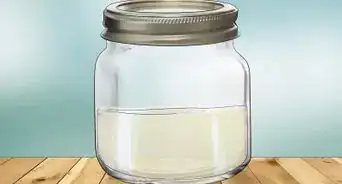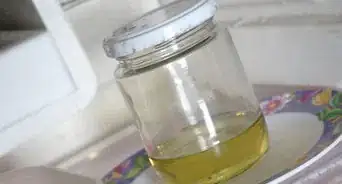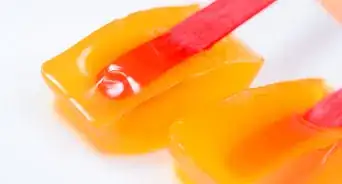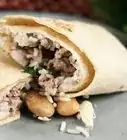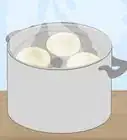This article was co-authored by wikiHow Staff. Our trained team of editors and researchers validate articles for accuracy and comprehensiveness. wikiHow's Content Management Team carefully monitors the work from our editorial staff to ensure that each article is backed by trusted research and meets our high quality standards.
There are 7 references cited in this article, which can be found at the bottom of the page.
This article has been viewed 13,385 times.
Learn more...
Memorizing recipes is super helpful if you're a bartender, barista, or just want to be able to use recipes without having to look them up. There are lots of great memorization tips and tricks, and most of them only require a pen and paper. By spending a few hours memorizing your recipes, you'll be able to make food and drinks quickly without even having to look them up.
Steps
Memorizing Recipes through Repetition
-
1Create flashcards to help you remember many different recipes. Write down the name of a drink or food item on one side of an index card and write out the ingredients on the other side. When you flip through the flashcards and see the name of the recipe, try to remember how to make it without looking at the back. Then, you can check the back of the card to see if you were right.[1]
- Flashcards are good for memorizing measurements associated with each ingredient.
- Flashcards are a great way to work on your memorization when you’re on the go!
-
2Make the recipe several times to gain muscle memory experience. Many people learn best by actively doing the thing they’re trying to learn. If you have the ingredients available, consider making the recipe several times to help you remember each action. Soon your body will make the movements without you even having to think about it![2]
- This method lets you put all of your knowledge to the test: the ingredients, measurements, and specific cooking instructions.
- If you don’t have all of the ingredients to make the recipe several times, even just pretending to make the recipe while going through all of the movements will help you memorize it.
Advertisement -
3Use a study app or website to help you review recipes on the go. There are lots of different sites you can visit and apps you can download for your phone that will let you create flashcards and other study materials to make memorizing recipes easier. Some of these include Quizlet, Brainscape, and StudyStack. Type in each recipe and start memorizing![3]
- Others websites and apps include cram.com, GoConqr, and StudyBlue.
- Study apps can help you memorize ingredients and measurements.
-
4Write out the recipe multiple times to commit it to memory faster. The more times you write out the recipe (or even recite it out loud), the easier and faster you’ll remember it. Get out a notebook and a pencil and write down the entire recipe several times to memorize it quickly. Try doing this once a day until you've committed the information to memory.[4]
- Be thorough as you're writing the recipe, jotting down the instructions that go along with the ingredients and measurements.
- Some researchers say that if you repeat something 30 times while focusing hard on it, you’ll have it memorized.[5]
- After you write the recipe out at least 5 times, try to test yourself and see if you can write it purely from memory.
Using Memory Tricks
-
1Make up a song about the recipe to help you remember ingredients. This is a fun way to learn recipes quickly and have them stick in your brain for a long time. Sing the list of ingredients to the tune of a song you already know or make up your own tune that goes with the recipe.[6]
- When you go to recall the recipe, you can sing the song out loud or in your head to remember it.
- Simple tunes or songs are especially useful for recipes that only have a few ingredients, like drinks.
-
2Come up with a mnemonic device for a memorization trick. A mnemonic device is a phrase or set of letters that will help you remember the details of the recipe you’re trying to memorize. For example, if you’re trying to remember the ingredients in a pesto chicken bake dish, you might create the phrase “Please Take My Chick!” which stands for the ingredients pesto, tomato, mozzarella cheese, and chicken.[7]
- Another example might be remembering the word “MESH” which stand for milk foam, espresso, steamed milk, and hot chocolate if you're trying to make a mocha latte.
- Mnemonic devices work for memorizing measurements that go along with ingredients too.
-
3Associate the recipe with a mental image to help you remember it. Instead of just memorizing words, try to picture each ingredient or step of the recipe as you go. This really helps if you’re a visual learner. Think of an image that will remind you of an ingredient or measurement the next time you have to remember your recipe.[8]
- For example, if you’re making a mojito, you might picture each ingredient in your head, such as the mint leaves, rum, and club soda.
- Picture anything that creates a connection to the recipe; this could be a memory you have of a friend making the recipe, a character from a book who ate or drank what you're making, or any other image that comes to mind.
-
4Use the memory palace technique to create a visual while studying. The memory palace technique is when you choose a place that you know well, such as your home or school, and associate an ingredient and its measurement with each room of the place. This helps you memorize the recipe using the visual layout of the place you know well.[9]
- The memory palace technique is great for linking specific measurements or amounts with ingredients, such as thinking of 1 cup (240 ml) of milk when you picture your living room.
References
- ↑ https://craftybartending.com/memorise-cocktail-recipes/
- ↑ https://craftybartending.com/memorise-cocktail-recipes/
- ↑ https://collegeinfogeek.com/spaced-repetition-memory-technique/
- ↑ https://www.psychologytoday.com/us/blog/happiness-in-world/200911/eight-ways-remember-anything
- ↑ https://time.com/4042569/how-to-improve-memory/
- ↑ https://www.news.com.au/lifestyle/food/restaurants-bars/how-waiters-and-baristas-remember-your-order-with-cool-memory-tricks/news-story/bfc056cd8501514836e969ea5f35f75d
- ↑ https://upserve.com/restaurant-insider/bartender-tricks-remembering-drink-recipes/
- ↑ https://www.psychologytoday.com/us/blog/happiness-in-world/200911/eight-ways-remember-anything
- ↑ https://litemind.com/memory-palace/



